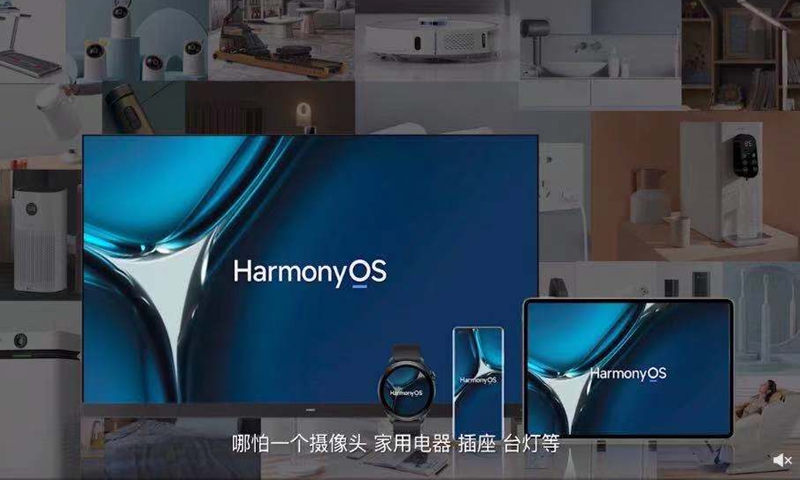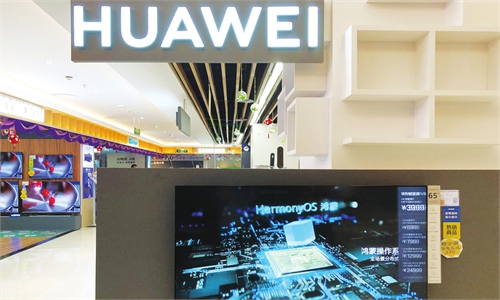
Huawei HarmonyOS
Users of Huawei's Harmony Operating System (HarmonyOS) have exceeded 50 million, with eight people upgrading to the OS every second, Huawei told the Global Times on Monday.
Huawei officially launched HarmonyOS 2, the OS for smartphones, on June 2. The system, read as Hongmeng in Chinese, is an operating system designed for various devices and settings. It was first launched on Internet-of-Things devices.
The OS is also widely viewed as the Chinese tech giant's replacement for Google's Android OS, since the Chinese company was barred from using Google's services under a US government export ban.
The HarmonyOS has been broadly used in Huawei watches, laptops and home appliances over the past two years.
At the beginning of July this year, Huawei said that the number of upgrades of the HarmonyOS had reached 30 million. It previously predicted that by the end of 2021, the number of devices equipped with HarmonyOS would reach 300 million, of which 200 million are Huawei devices.
There are more than 20 models of Huawei mobile phones that can be upgraded to the HarmonyOS. In terms of ecosystem development, more than 300 partners including home appliance manufacturers Midea, Supor and information technology firm iFlytek have joined.
It is estimated that more than 40 mainstream Chinese brands will join the HarmonyOS in 2021, the firm said.
Aided by China's vast consumer base, a benign testing environment and rapid deployment of 5G networks, it might be an opportunity for the Chinese tech giant to build HarmonyOS into the world's third-largest mobile ecosystem, after Apple's iOS and Google's Android, Ma Jihua, an industry veteran analyst, told the Global Times.
On July 29, Huawei launched its long-anticipated P50 handset series during an online event, pre-loaded with the self-developed HarmonyOS software platform. It's the Chinese firm's first mobile series to be offered without Android or Google services.
The OS is also seen as a way to limit the company's decline in handset market share.
The latest financial disclosures, which covered the second quarter, showed that Huawei posted its third consecutive fall in business revenue. The company pointed to a marked decline in its consumer business, caused by shrinking smartphone sales due to US sanctions.
Global Times


